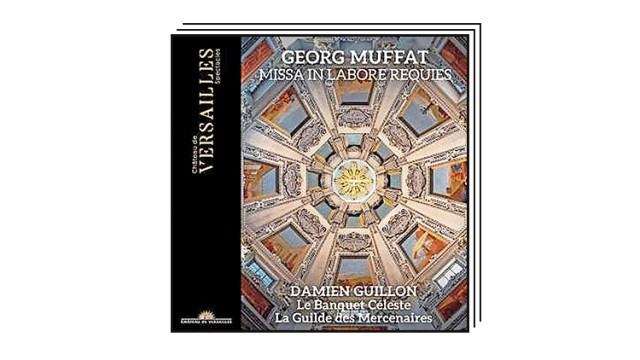Poetry: Children’s calendar 2024
“A girl stood in amazement/in front of a chestnut tree,/looked up into the many branches/that were full of fruit,/and exclaimed in amazement:/’I didn’t know that hedgehogs/grow on trees!” This Catalan poem by Ramon Besora is just one of 52 from thirty languages and 38 countries that are collected in the children’s poetry calendar from Moritz Verlag. You can also see a girl who looks a bit hedgehog herself – the illustration from the original edition forms a calendar page with each poem and its German translation, one every week. From Estonia comes an anti-lullaby for daddy: “If you snore loudly/then I get goosebumps”, a food wish from England: “Yes, I would like spaghetti”. In a poem from Korea, cicadas chirp “zirp chirp” from the high-rise forest. The stages are selected by the team from the International Youth Library in Munich. A lyrical trip around the world that makes you look forward to every Sunday evening, because then you have to turn the page! Kathleen Hildebrand
Novel: “Fabian and Sebastian” by Wilhelm Raabe
Raabe is an old-fashioned, soulful author who always thinks about his own impending obscurity.
(Photo: Wallstein Verlag)
How do the little chocolate figures wrapped in glitter paper that we find on gift plates at Christmas come about? Wilhelm Raabe’s long story “Fabian and Sebastian” from 1882 gives us an insight into industrial history. There we see the entire process, with the roasting oven, mill, rolling machines, hydraulic press (in the loud “rattle room”) right up to labeling rooms and packing rooms. The basic material, the cocoa beans, come from the Indian Ocean before they are transformed into the sweet, melting chocolate mass by hundreds of workers’ hands. Gendering is allowed here because Raabe distributes the entire process precisely in a gender-sensitive manner between male and female workers.
With “Fabian and Sebastian” a new annotated Raabe edition begins at Wallstein Verlag. The choice is good because this story is little known and is part of the increasingly complex late work of Raabe, who died in 1910. For a few years now, he has been developing into a veritable “Writer’s Writer” of young German literature. Technically, Raabe is often at the same level as William Faulkner: he lets his characters talk as if without intention (albeit in an Old Franconian manner) and the “plot” and often gruesome backstories appear as if casually from the background noise. For a long time the reader (m/f/d) doesn’t even know what we’re talking about: reading becomes attention training and brain jogging. At the same time, Raabe looked at social circumstances like no one else at the time: industry, environmental destruction, colonialism. And yet he remains an old-fashioned, soulful author who always thinks about his own impending obscurity.
The adjective “marottified” in the bracket above comes from Moritz Baßler, the editor of this pilot volume. His casual, clever afterword wonderfully reveals Raabe’s complex structure between the tattered surface of the text and a grisly plot involving murder and prison. The chocolate company “Pelzmann und Compagnie” harbors a family drama that can only be resolved by a Creole niece who has traveled from the South Seas. If you still like to associate “Christmas” with “surprise,” turn to the great narrator Wilhelm Raabe. Gustav Seibt
Pop: Bacao Rhythm & Steel Band
Right at the beginning of the magnificent film “Anatomy of a Case” a deafeningly loud piece of music sets the fatal event in motion: a steel drum version of 50 Cent’s “PIMP” – hip-hop that traveled from New York via Trinidad to the French Alps . The Hamburger is behind the song’s metamorphosis Bacao Rhythm & Steel Band, a project around the funk musician Björn Wagner. The band plays many of their own songs, but they are best known for their covers of hip-hop classics. With their album “55” or the prerelease of the upcoming record, “BRSB”, they overcome the touring image of the steel drum as well as the stereotypes of hip-hop. In their place come irony, passion and a lot of stubbornness – exactly the qualities that were required in this film. Jörg Häntzschel
Classical: “Missa in labore requies A 24”

The entire spectrum of baroque musical art can be heard here.
(Photo: Château de Versailles Spectacles)
Given the year-round Mozart hype, one sometimes forgets that Salzburg has a much longer musical tradition. Wolfgang Amadeus Mozart and Michael Haydn are not the decisive historical guides, rather Ignaz Franz Biber and Georg Muffat. After studying in Paris (music) and Ingolstadt (law), after his time at the Jesuit college in Alsace and in Vienna, he came to Salzburg via Prague in 1678, where he worked alongside Biber as cathedral organist.
What particularly distinguished Muffat, and this can also be heard in his “Missa in labore requies”, was his artistic cosmopolitanism. Like few others, he mastered both the French and Italian styles and was personally familiar with the famous Jean-Baptiste Lully in Paris as well as with Arcangelo Corelli in Rome. In wealthy Salzburg, Muffat was able to develop his talent in baroque splendor. Even though his Missa boasts only half as many musicians as his colleague Biber’s monumental Missa Salisburgensis, it is hardly inferior to it in terms of splendor and sound development. This is mainly due to the way Muffat uses soloists, choral writing and orchestral instruments.
The bright, penetrating brass instruments in particular require carefully calculated dosage in order to achieve an optimal overall effect. Of course, this requires a corresponding practical implementation, which the composer sometimes gets on the right track with his own comments. With the ensembles Le Banquet Céleste and La Guilde des Mercenaires, conductor Damien Guillon follows Georg Muffat’s baroque spirit of bringing the individually designed with the overall dramatic sound spatially expanded into an exciting connection.
The legacy of Venetian polychoral music is unmistakable and was impressively staged in the Salzburg Cathedral with four galleries and four organs. When we rediscover this 24-part Muffat Mass, we immediately experience the entire spectrum of baroque musical art, from strict counterpoint to glamorous instrumental design and beyond: the precise musical declamation of the text. An overall sound miracle. Helmut Mauro
Audio book: Johannes Nussbaum reads “Real Age”

The actor Johannes Nussbaum, 2021.
(Photo: Frank Hoermann/Sven Simon/Imago)
It’s hard to express how it sounds when the Austrian actor Johannes Nussbaum reads the audio book “Real Time” (Argon Verlag, on Spotify). Germans love Viennese humor because no other language is so savory and elegant at the same time. “Real Age” by Tonio Schachinger tells the story of elite student Till Kokorda, who prefers to spend his time playing the computer game “Age of Empires” than playing with Adalbert Stifter. When the despotic teacher Till slams the report card, Nussbaum sounds wonderfully like a mixture of genuine anger and enjoyment at the failure of others: “Do you understand what I’m saying? I don’t believe that, otherwise no one would be writing about some stupid video game. Here you should You have to be present. And not in your stupid IT room and not at any gossip.” Christiane Lutz

